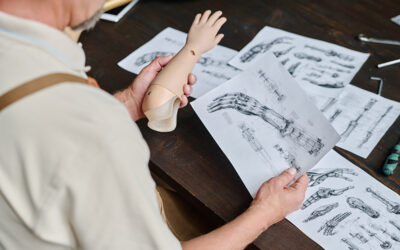Otolaryngologists or ENT specialists diagnose and treat a wide range of ear, nose, and throat conditions in both adults and children. In addition to keeping abreast with the latest treatment methods required to provide proper care, they need to work with their medical coding company to report ENT services or procedures based on current coding guidelines, each patient’s specific circumstances, and payer rules.
In addition to new and modified CPT codes, the American Academy of Otolaryngology-Head and Neck Surgery (AAO-HNS) says that ENTs need to note that the valuations related to otolaryngology-head and neck surgery services have also changed for CY 2018. Key changes:
- CY2018 MPFS addressed rhinologic coding issues such as nasal sinus endoscopy, inferior turbinate resection, and control of nasal hemorrhage.
- Several nasal sinus endoscopy services were acknowledged as potentially misvalued since billing patterns indicated they were billed together more than 75% of the time (same beneficiary/same day of service). As a result, specialty societies were required to ‘bundle’ services together and create new codes that represented the combined services.
- CMS fixed 2018 values for five new nasal sinus endoscopy CPT codes (31241, 31253, 31257, 31259 and 31298) and ten existing nasal sinus endoscopy CPT codes.
Code Changes for Otolaryngology Procedures
The new and revised 2018 CPT codes for otolaryngology services finalized through the review process of the American Medical Association’s (AMA) CPT Editorial Panel and the AMA RVS Update Committee (RUC) are as follows:
- 15732-15738 Muscle Flap Family (up from 3 codes to 5 codes)
- 15734 Muscle, myocutaneous, or fasciocutaneous flap; trunk
- 15736 Muscle, myocutaneous, or fasciocutaneous flap; upper extremity
- 15738 Muscle, myocutaneous, or fasciocutaneous flap; lower extremity
The 2 new codes in this category are:
- 15730 Midface flap (ie, zygomaticofacial flap) with preservation of vascular pedicle(s)
- 15733 Muscle, myocutaneous, or fasciocutaneous flap; head and neck with named vascular pedicle (ie, buccinators, genioglossus, temporalis, masseter, sternocleidomastoid, levator scapulae)
- 30140 Submucous resection inferior turbinate, partial or complete, any method
- 30901-30906 Control of Nasal Hemorrhage Family
- 30901 Control nasal hemorrhage, anterior, simple (limited cautery and/or packing) any method
- 30903 Control nasal hemorrhage, anterior, complex (extensive cautery and/or packing) any method
- 30905 Control nasal hemorrhage, posterior, with posterior nasal packs and/or cautery, any method; initial
- 30906 Control nasal hemorrhage, posterior, with posterior nasal packs and/or cautery, any method; subsequent
- 31295-31297 Balloon Sinuplasty Family (up from 3 codes to 4 codes)
- 31295 Nasal/sinus endoscopy, surgical; with dilation of maxillary sinus ostium (eg, balloon dilation), transnasalor canine fossa
- 31296 Nasal/sinus endoscopy, surgical; with dilation of frontal sinus ostium (eg, balloon dilation)
- 31297 Nasal/sinus endoscopy, surgical; with dilation of sphenoid sinus ostium (eg, balloon dilation)
The new/bundled code in this category is-
31298 Nasal/sinus endoscopy, surgical; with dilation of frontal and sphenoid sinus ostia (eg, balloon dilation) - Functional Endoscopic Sinus Surgery (FESS) Family
- 31254 Nasal/sinus endoscopy, surgical with ethmoidectomy; partial (anterior)
- 31255 Nasal/sinus endoscopy, surgical with ethmoidectomy; total (anterior and posterior)
- 31256 Nasal/sinus endoscopy, surgical, with maxillary antrostomy
- 31267 Nasal/sinus endoscopy, surgical, with maxillary antrostomy; with removal of tissue from maxillary sinus
- 31276 Nasal/sinus endoscopy, surgical, with frontal sinus exploration, including removal of tissue from frontal sinus, when performed
- 31287 Nasal/sinus endoscopy, surgical, with sphenoidotomy
- 31288 Nasal/sinus endoscopy, surgical, with sphenoidotomy; with removal of tissue from the sphenoid sinus
New/Bundled codes in this category are-
- 31253 Nasal/sinus endoscopy, surgical with ethmoidectomy; total (anterior and posterior), including frontal sinus exploration, with removal of tissue from frontal sinus, when performed
- 31257 Nasal/sinus endoscopy, surgical with ethmoidectomy; total (anterior and posterior), including spehnoidotomy
- 31259 Nasal/sinus endoscopy, surgical with ethmoidectomy; total (anterior and posterior), including sphenoidotomy, with removal of tissue from sphenoid sinus
- 31600-31610 Tracheostomy Family
- 31600 Tracheostomy, planned (separate procedure)
- 31601 Tracheostomy, planned (separate procedure); younger than 2 years
- 31603 Tracheostomy, emergency procedure; transtracheal
- 31605 Tracheostomy, emergency procedure; cricothyroid membrane
- 31610 Tracheostomy, fenestration procedure with skin flaps
- 95004 Percutaneous tests (scratch, puncture, prick) with allergenic extracts, immediate type reaction
- New Sphenopalatine Artery Code31241 Nasal/sinus endoscopy, surgical; with litigation of sphenopalatine arteryPoints to Note:
- Partial and total ethmoidectomy are bundled with the new codes, 31253, 31257, and 31259 since each of the new codes includes a total ethmoidectomy.
- A maxillary antrostomy still stands independently and is not included in any of the new codes, so the combination codes only include the anterior and posterior ethmoid sinuses along with the frontal and sphenoid sinuses. Therefore, in the case of a maxillary antrostomy performed along with a total ethmoidectomy and a frontal sinusotomy on the same side, the combination codes to use are 31253 plus 31256 if no tissue was removed and plus 31267 if tissue was removed.
- If a maxillary antrostomy, total ethmoidectomy, and sphenoidotomy are performed on the same side, a few combinations of codes may apply, based on whether the tissue was removed from the maxillary sinuses and/or sphenoid sinuses:
- 31257 and 31256 if no tissue was removed from either maxillary or sphenoid sinuses
- 31257 and 31267 if tissue is only removed from the maxillary sinus
- 31259 and 31256 if tissue is only removed from the sphenoid sinus
- 31259 and 31267 if tissue is removed from both the maxillary and sphenoid sinuses
- Work and direct practice expense inputs for CPT code 30140 Submucous resection inferior turbinate, partial or complete, any method, were identified as potentially misvalued. Direct practice expense inputs for this code were finalized, which included three new equipment codes based on the invoices submitted for this code family: a 2mm reusable shaver blade (EQ383), a microdebrider handpiece (EQ384) and a microdebrider console (EQ385). CMS changed the global period for this code from a 090 day global period to a 000 day global period, allowing providers to bill for follow-up care services.
One FESS question that the AMA has yet to address is about coding for all four sinuses operated on the same side. According to a recent AAPC report, expert physicians recommend two options for coding for all 4 sinuses (with no removal of tissue):
- 31253, 31287, 31256
or - 31257, 31276, 31256
If tissue is removed:
- 31287 and/or 31256 would be replaced with 31288 and/or 31267 in the first coding combination
or - 31257 and/or 31256 would be replaced with 31259 and/or 31267.
The AAO-HNS also announced that the AMA RUC has reviewed several existing otolaryngology-related CPT codes and submitted the RUC-approved values to CMS for final determination for the CY 2019 MPFS final rule. Modified RVUs for some, or all, of these procedures may be expected in CY 2019.
Managing otolaryngology medical billing, collections and coding changes is much easier for otolaryngologists who partner with an experienced medical billing and coding service provider. This will ensure billing of ENT services using the latest codes to prevent denials and underpayments.




